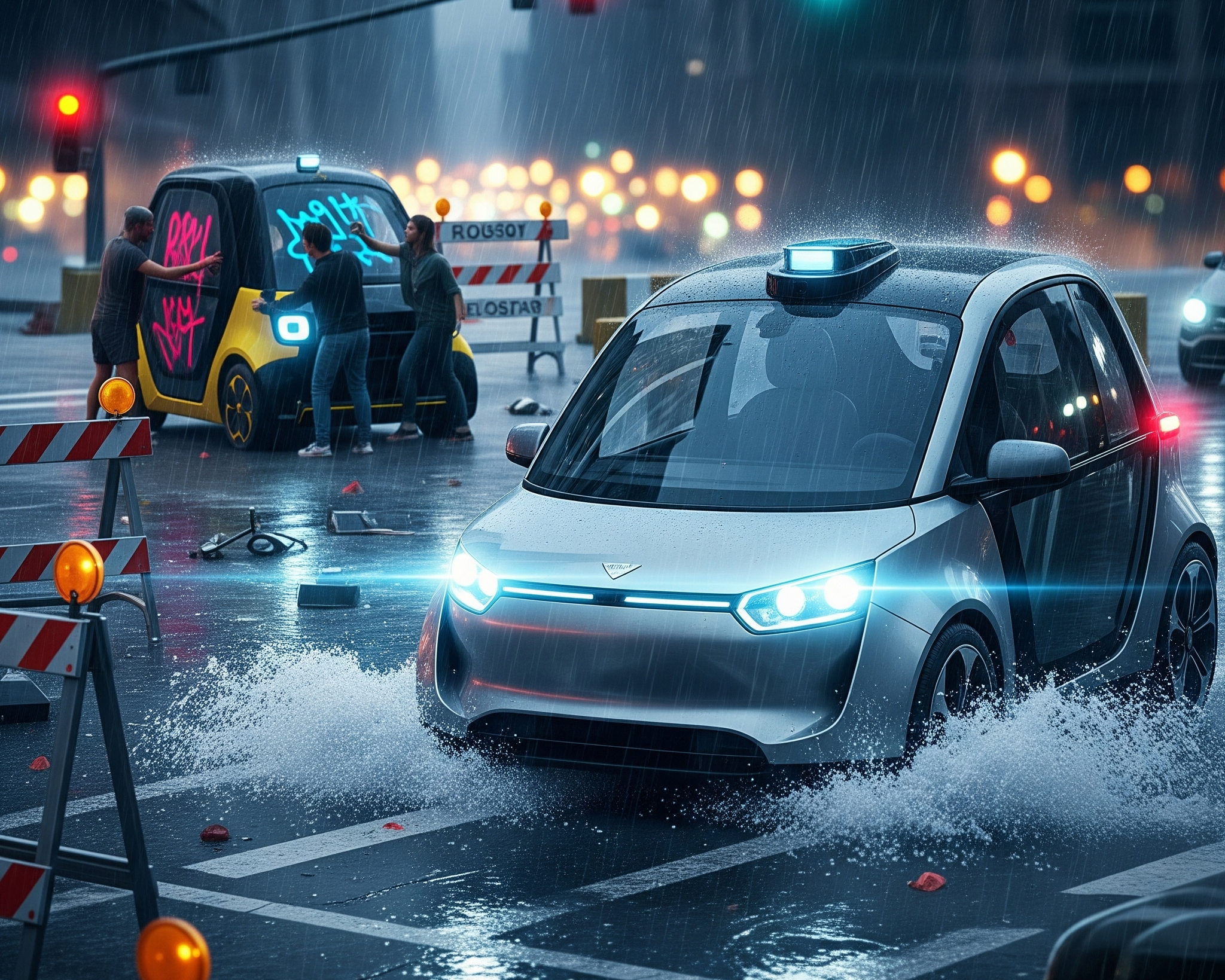Reality Check: Why Robotaxis Aren't Ready for Mass Deployment

The robotaxi revolution is here or so the headlines would have us believe. With Waymo hitting 100 million autonomous miles and Tesla finally launching its long-promised robotaxi service in Austin, it's easy to get caught up in the hype. But as someone who's been following this space closely and experiencing autopilot technology firsthand, I believe we're being sold a future that's still years away from reality.
The Current State: Impressive, But Limited
Don't get me wrong the technology is genuinely impressive. Waymo currently operates roughly 700 driverless cars nationally, with about 300 in San Francisco alone and around 100 in Los Angeles. Tesla's recent Austin launch, while limited to invited users and a small geofenced area, has generated mostly positive reviews. Users describe the rides as "smooth and comfortable," and even Tesla's critics acknowledge the vehicles' "cautious and humanlike behavior."
The autopilot systems we have today are remarkably good at handling standard driving scenarios. In controlled environments with predictable conditions, these vehicles perform admirably. But here's where my optimism hits a wall of reality.
The Edge Cases That Break the System
Every time I encounter a sudden rainstorm while using autopilot, the same thing happens: the system immediately disengages and asks me to take over. This isn't a minor inconvenience it's a fundamental limitation that reveals why we're nowhere near ready for mass deployment.
Consider the everyday scenarios that would cripple an unattended robotaxi fleet:
Mechanical failures: What happens when a robotaxi gets a flat tire in the middle of a busy street? In a human-operated vehicle, the driver can assess the situation, pull over safely, and call for help. A robotaxi would need a human operator to physically respond and with hundreds of thousands of vehicles, that's simply not scalable.
Weather emergencies: When visibility drops or roads become treacherous, current autopilot systems bail out. Imagine 100,000 robotaxis all simultaneously requesting human intervention during a sudden storm.
Vandalism and security: A drunk person decides to kick your robotaxi or throw something at it. Without a human present, how does the vehicle respond? Does it continue the route with damage? Call police? These aren't technical problems they're human problems that require human judgment.
Infrastructure failures: Road closures, emergency vehicles, construction that wasn't in the mapping data all situations where a human driver adapts but a robotaxi might struggle without remote assistance.
The Scale Problem
This brings us to the elephant in the room: scale. Waymo projects having 6,000 to 10,000 vehicles by July 2026 a massive increase from today's 700. Tesla's Elon Musk claims they'll have over 1,000 robotaxis "within a few months."
But here's the math that doesn't add up: if even 0.1% of a 100,000 vehicle fleet needs human intervention simultaneously (a conservative estimate during adverse conditions), that's 100 vehicles requiring immediate attention. How many remote operators and emergency responders would you need? How quickly could they respond? The logistics become nightmarish.
The Infrastructure Reality
Our current infrastructure simply wasn't designed for fully autonomous vehicles at scale. Road signage, traffic patterns, emergency protocols everything assumes human drivers who can make judgment calls and communicate with other humans.
Tesla's Austin trial operates in a carefully mapped, geofenced area with Tesla employees as "safety monitors" in every vehicle. Even Waymo, with years more experience, operates in limited geographic areas with extensive mapping and infrastructure partnerships. These aren't signs of a technology ready for widespread deployment they're signs of a technology still in careful testing phases.
The Economic Reality Check
The promise of cost-effective robotaxis assumes massive scale with minimal human oversight. But when you factor in:
Remote monitoring infrastructure
Emergency response teams
Vehicle maintenance and retrieval systems
Insurance for unattended vehicles
Technology updates and edge case handling
The economics become far less compelling than the glossy presentations suggest.
A More Realistic Timeline
I'm not a robotaxi pessimist I genuinely believe the technology will get there eventually. The autopilot systems I use regularly are impressive and continuously improving. But "eventually" and "within a few years" are very different timelines.
For true mass deployment of unattended robotaxis, we need:
- Weather resilience: Systems that can handle rain, snow, and fog without human takeover
- Mechanical problem resolution: Automated systems for common vehicle issues
- Security protocols: Robust responses to vandalism, theft, and passenger safety
- Infrastructure adaptation: Roads, signage, and emergency systems designed for autonomous vehicles
- Regulatory frameworks: Comprehensive laws and liability structures
The Path Forward
The current limited deployments are valuable stepping stones. Waymo's cautious expansion and Tesla's geofenced trials are generating crucial real-world data. But let's be honest about what we're seeing: carefully controlled experiments, not the dawn of mass autonomous transportation.
The robotaxi future is coming, but it's not around the corner. Until we solve the edge cases, infrastructure challenges, and scale problems, we'll continue to see impressive demonstrations in controlled environments rather than the transformative transportation revolution we've been promised.
The technology is good really good. But good enough for a few hundred vehicles in perfect conditions isn't the same as good enough for hundreds of thousands of vehicles facing every scenario our chaotic world can throw at them.
We owe it to ourselves to be realistic about the timeline. The robotaxi revolution will happen, but let's stop pretending it's happening next year.
